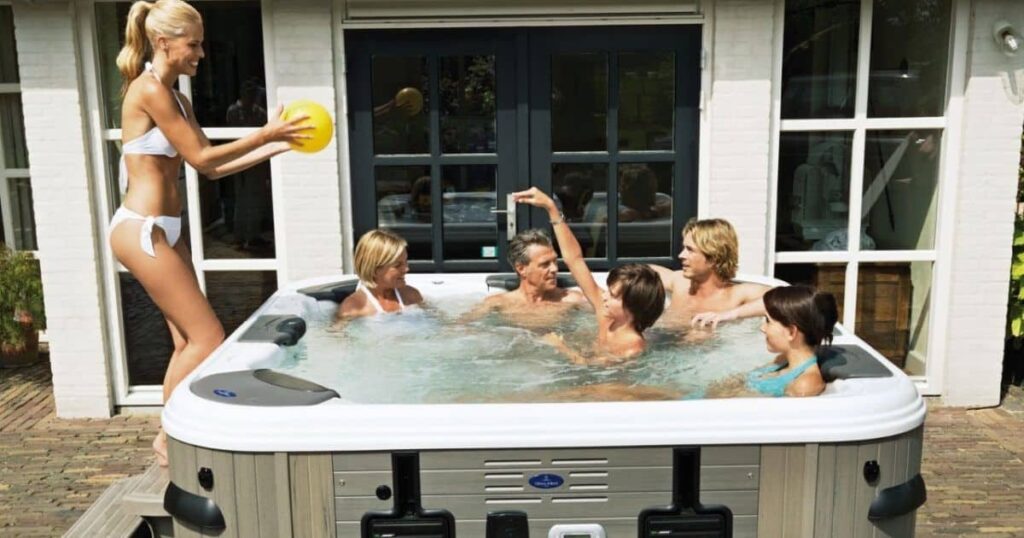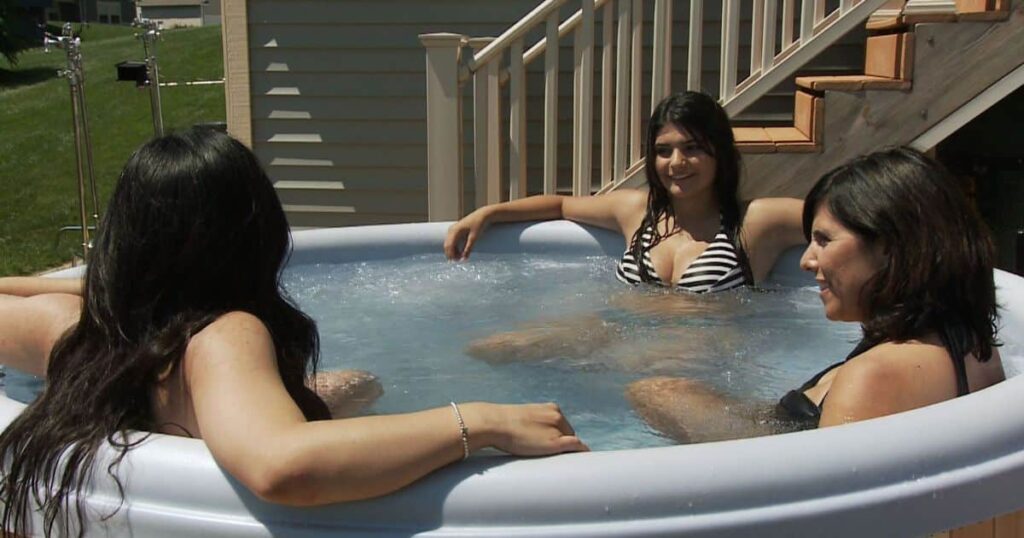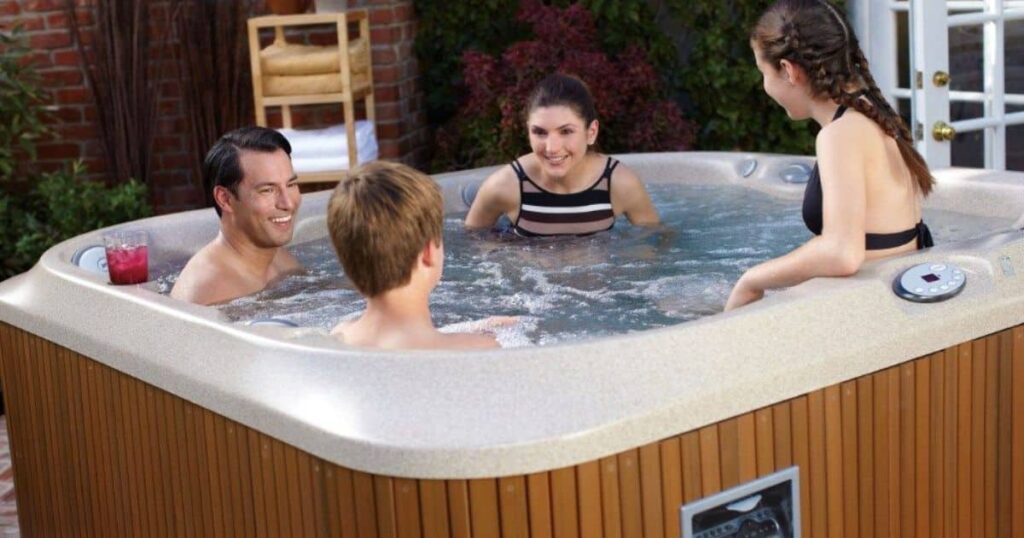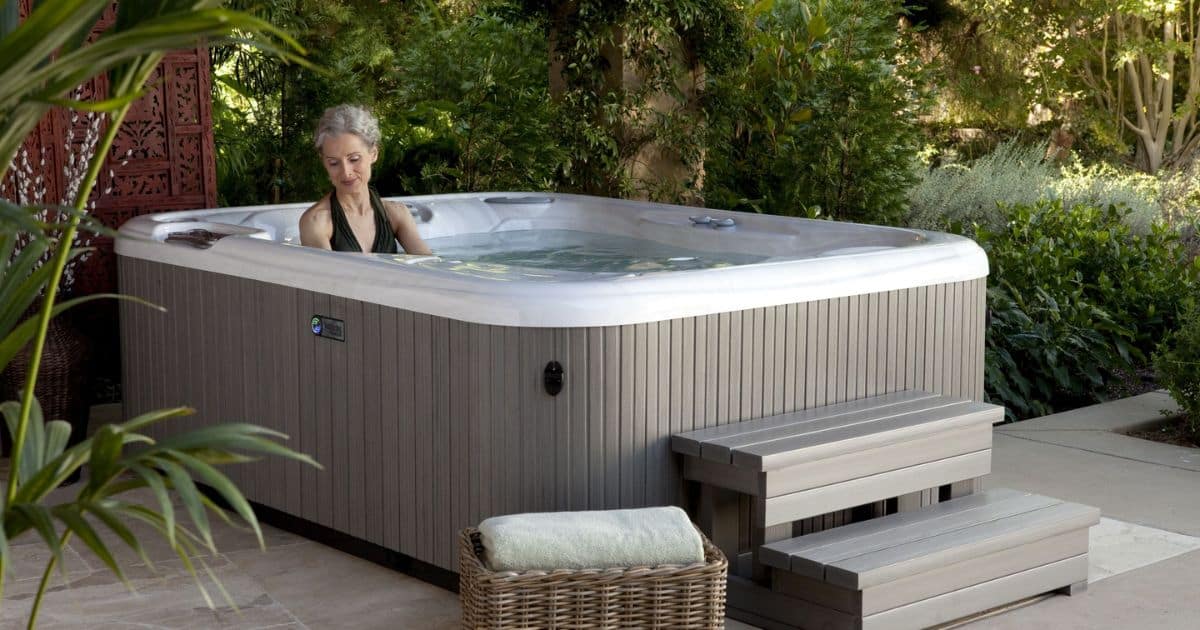The dimensions of a hot tub impact features, hydromassage ability, energy costs and more. This guide examines key considerations when selecting a tub like shapes, sizes, efficiency factors and installation to find the best fit option.
Before purchasing a hot tub, there are important aspects to mull over regarding size, energy usage, and installation fit. Discover optimal design elements that suit your space, budget and intended usage. Let’s delve into important hot tub dimensions.
Whether for solo relaxation or company, finding the perfect hot tub hinges on priorities along with setting and finances. This breakdown illuminates size details and configuration traits worth weighing for a tub tailored precisely to your lifestyle for years of carefree unwinding.
Some Things to Consider Before Purchasing a Hot Tub

Before diving into hot tub dimensions, consider crucial factors like available space, intended usage, budget, and maintenance requirements. Assessing your space ensures your chosen dimensions fit seamlessly into your backyard or desired location. Whether you seek solitary relaxation or entertaining guests, understanding these considerations helps align your preferences with your hot tub choice, ensuring a satisfying investment that enriches your lifestyle for years to come.
What Hot Tub Shape Should You Choose?
Hot tubs come in various shapes, each offering unique benefits and aesthetic appeal. Circular hot tubs promote social interaction, rectangular ones provide ample legroom, square tubs offer versatility, and triangular tubs are space-saving. Choose a shape that complements your outdoor space and lifestyle, ensuring an enjoyable and visually pleasing addition to your backyard retreat.
Some Choices and Their Features:
Different hot tub shapes offer distinct features, catering to diverse preferences and needs. Circular tubs encourage conversation, rectangular ones offer spaciousness, square tubs provide versatility, and triangular tubs maximize space efficiency. Understanding these features helps you select a shape that harmonizes with your outdoor environment and enhances your relaxation experience.
Circular Hot Tubs:
Circular hot tubs foster intimacy and social interaction, with bench-style seating encircling a central point of hydrotherapy. Ideal for smaller spaces, they create a cozy atmosphere for gatherings or quiet relaxation. Their symmetrical design and compact footprint make them an attractive option for those seeking a communal spa experience in limited outdoor areas.
Rectangular Hot Tubs:
Rectangular hot tubs offer a sleek and modern aesthetic, with elongated shapes maximizing space efficiency. Featuring ergonomic designs and ample legroom, they provide comfortable seating for relaxation. Perfect for both solo unwinding and socializing, rectangular tubs seamlessly integrate into various outdoor settings, offering versatility and style.
Square Hot Tubs:
Square hot tubs strike a balance between functionality and aesthetics, with symmetrical shapes optimizing space usage. Offering versatility in placement and design, they cater to various preferences and environments. Whether placed on a patio or nestled in a garden alcove, square tubs add a touch of luxury and sophistication to any outdoor space.
Triangular Hot Tubs:
Triangular hot tubs are innovative space-saving solutions, ideal for unconventional layouts or compact outdoor spaces. With their corner-friendly design and compact footprint, they maximize usability without compromising comfort. Despite their smaller size, triangular tubs provide a relaxing hydrotherapy experience, making them an attractive option for those seeking efficient and stylish spa solutions.
Why Energy-Efficient Hot Tubs?

In an era of environmental awareness and rising energy costs, investing in an energy-efficient hot tub offers multiple benefits. These models not only reduce your carbon footprint but also save on utility bills over time. By optimizing insulation, circulation systems, and heating mechanisms, energy-efficient hot tubs minimize heat loss and energy consumption without sacrificing performance, ensuring a sustainable and cost-effective spa experience for years to come.
Factors for an Energy-Efficient Hot Tub
Several factors contribute to the energy efficiency of a hot tub, including insulation quality, circulation pump efficiency, and heating system design. High-quality insulation and well-sealed hot tub covers minimize heat loss, while efficient circulation pumps and filtration systems optimize water flow and reduce energy consumption. Additionally, features like programmable timers and eco-modes further enhance efficiency, ensuring a comfortable and environmentally friendly spa experience.
Installing Your Hot Tub

Proper installation is crucial for ensuring the longevity and performance of your hot tub. Considerations include electrical requirements, foundation preparation, and access for delivery. Hiring a professional installer ensures compliance with local building codes and safety standards. Electrical needs may vary based on tub size and features, requiring consultation with a qualified electrician. A stable foundation, such as a concrete pad, supports the tub’s weight and prevents settling. Adequate access for delivery and maintenance simplifies installation and upkeep, guaranteeing years of enjoyment.
Electrical requirements for hot tub installation:
Hot tubs require dedicated electrical circuits to power heating and pumping systems safely. Consult a qualified electrician to determine wiring needs, breaker size, and proper grounding. Typically, a 240-volt circuit with a dedicated ground fault circuit interrupter (GFCI) is recommended for safety and performance.
How Do Hot Tub Sizes Affect the Cost?

Hot tub dimensions significantly influence cost, considering materials, construction, and features. Larger tubs require more materials and labor, resulting in higher upfront costs and potentially increased installation and transportation expenses. Despite higher initial investments, larger tubs offer more seating capacity and features, providing greater value for those seeking premium spa experiences.
Four Size Categories of the Most Popular Hot Tubs:
Hot tubs are available in various sizes, typically categorized as small, medium, large, and extra-large. These categories cater to different preferences and space constraints, offering options for intimate retreats or spacious entertainment hubs. Understanding size categories helps narrow down choices and find a hot tub that fits your lifestyle and budget.
Small Hot Tubs
Ideal for individuals or couples, small hot tubs offer intimate relaxation experiences with compact footprints and ergonomic designs. Despite their size, they feature powerful jets for targeted hydrotherapy and are energy-efficient. Perfect for small outdoor spaces or indoor installations, these tubs provide cozy retreats for unwinding and rejuvenating.
Medium Hot Tubs
Medium hot tubs strike a balance between space efficiency and seating capacity, accommodating families or small groups comfortably. With various seating configurations and ample room for relaxation, they offer versatility and style. Their moderate size simplifies installation and maintenance, making them popular choices for those seeking luxurious spa experiences without overwhelming outdoor spaces.
Extra-Large Hot Tubs
Extra-large hot tubs epitomize luxury and indulgence, with seating for eight or more people and premium features like built-in sound systems and LED lighting. Perfect for large families, parties, or commercial settings, these tubs offer unparalleled space and comfort. Despite their size, they are energy-efficient and easy to maintain, making them worthy investments for those seeking the ultimate spa experience.
Standard Hot Tub Sizes
While hot tub dimensions vary, standard sizes are commonly available, including small tubs accommodating 2-3 people, medium tubs seating 4-6, and large tubs accommodating 6-8 or more. Understanding these standard sizes simplifies selection and ensures compatibility with your space and usage needs.
FAQs
What is the size of a standard hot tub?
A standard size for a hot tub is 5-6 feet diameter and accommodates 4-6 people. It holds about 300 gallons of water.
How much space is needed for hot tub?
A hot tub needs around 5×5 feet of open space for a smaller 4-6 person size. Larger 7-10 person hot tubs require 6×6 feet or more.
What is the diameter of a 4 person hot tub?
The diameter of a standard 4 person hot tub is about 5 feet. This provides enough room for 4 adults to sit comfortably.
How big is a 10 person hot tub?
A 10 person hot tub is generally around 7-8 feet in diameter and holds approximately 650 gallons of water. It takes up around 8×8 feet of space.
What size hot tub is best for 4 people?
The best size hot tub for 4 people is one that holds 250-450 gallons, about 5×5 feet. This medium size (often called a 5-person tub) allows adequate seating and hydrotherapy for 4 adults without extra unused space.
Conclusion
Hot tub dimensions are crucial considerations when creating your backyard sanctuary. From choosing the right shape to understanding energy efficiency and installation requirements, every aspect impacts your relaxation experience. By considering factors like available space, usage needs, and budget constraints, you can find the perfect hot tub to transform your outdoor space into a haven of tranquility and rejuvenation. Whether you prefer cozy intimacy or spacious luxury, our comprehensive guide equips you with the knowledge to make informed decisions and enjoy years of blissful relaxation in your ideal hot tub retreat.








